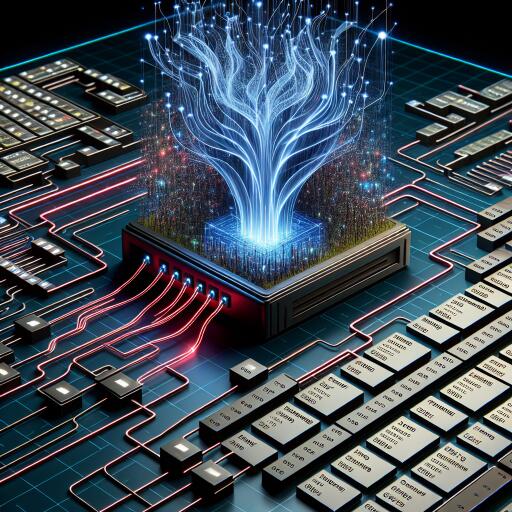A Revolutionary Approach to Data Classification: Introducing Predictor Circuits
In the realm of artificial intelligence (AI), deep learning has carved a niche for itself, achieving benchmarks previously only dreamt of in fields like image recognition and language understanding. The backbone of these advancements lies in the complex machinery of computational techniques, propelling the pursuit of more efficient hardware solutions to keep up with the high demands of deep neural network processing.
Enter the era of hardware accelerators, devices engineered to execute specific tasks with far greater efficiency than the traditional central processing units (CPUs). These accelerators are the product of dedicated research efforts aimed at bridging the gap between the computational intensity of deep learning models and the hardware required to run them.
Yet, most accelerator design efforts have been conducted in isolation from the actual process of training and executing deep learning models. Only a handful of research teams have ventured to tackle hardware design and machine learning model optimization concurrently. It is within this context that a groundbreaking development has emerged from the collaboration between the University of Manchester and Pragmatic Semiconductor.
Their pioneering work revolves around a machine learning-based technique designed for the automatic generation of classification circuits directly from tabular data, which comprises a mix of numerical and categorical information. This novel approach is documented in detail in their research paper published in Nature Electronics, introducing what they term “tiny classifiers.”
The methodology behind tiny classifiers shifts the traditional machine learning development cycle into a new paradigm. “Instead of maximizing performance during model training and then reducing the model’s memory and area footprint for deployment, we propose a solution that automatically generates efficient predictor circuits for classifying tabular data,” explain Konstantinos Iordanou, Timothy Atkinson, and their research team.
The tiny classifier circuits, composed of a few hundred logic gates, surprisingly maintain accuracies comparable to those of advanced machine learning classifiers, despite their minimalistic design. “This approach leverages an evolutionary algorithm to explore the logic gate space, culminating in a classifier circuit that achieves maximum training prediction accuracy with no more than 300 logic gates,” the team elucidates.
The researchers’ simulations of the tiny classifier circuits revealed promising outcomes in both accuracy and power consumption. Further validation on actual low-cost integrated circuits (ICs) corroborated their efficacy. “As a silicon chip, our tiny classifiers demanded 8-18 times less area and 4-8 times less power compared to leading machine learning baselines,” the researchers report. When deployed on a low-cost flexible substrate, they observed an astonishing reduction in area and power consumption, alongside a sixfold improvement in yield versus the most hardware-efficient machine learning baselines.
Looking ahead, tiny classifiers hold the potential to revolutionize a myriad of real-world applications. From serving as triggering circuits on chips for smart packaging and goods monitoring to paving the way for affordable near-sensor computing systems, the possibilities are vast and promising.
This innovation not only marks a significant leap towards optimizing hardware for AI applications but also opens up new avenues for research and collaboration. As the field of machine learning continues to evolve, the synergy between model development and hardware design will undoubtedly lead to more efficient, powerful, and versatile AI systems capable of tackling the challenges of tomorrow.










